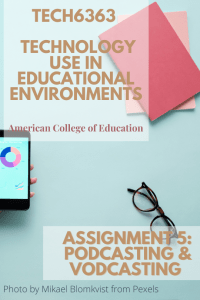Online teacher communication is essential to a successful online course. Make a copy of the podcast transcript to follow along.
Why does Online Communication Matter?
Teachers know how to communicate with students. We have used some techniques for years, decades, and collectively for centuries. However, online communication differs from face-to-face and even blended learning. Online and blended teachers communicate differently with students; blended teachers still rely on face-to-face communications largely (Brodersen & Melluzo, 2017; Pulham et al., 2018). One of the challenges in changing to online teaching is structuring an online communication strategy and sticking to it. Effective online communication can be especially challenging for teachers doing any teaching in addition to online teaching.
In online classes, weeks three and four are when enough data is available to see who needs intervention. Most research for completely online learning is in higher education, but the estimation is “10-20% of students exhibit patterns of absence or disengagement” (Johnson, 2013).
There are specific strategies teachers can use to maintain positive communications for all students and to reintegrate those who may have started to disengage.
How can a Teacher Re-engage Students?
Weeks three-four are critical to establishing your awareness of any non-productive student work habits. Students who are at-risk due to participation require a personalized message to both the student and their parent(s) so that all interested parties can help the student. As you increase your presence in class, these behaviors diminish (Johnson, 2013).
Work with other virtual teachers at your school to create some template emails that acknowledge the absence of presence online, absence of submitted work, absence of participation, etc. Families will likely receive this feedback from multiple teachers at your school, so it is best to be in line with other virtual teachers at your school and have similar expectations for work recovery.
Often when students are aware that the instructor can see their online activity or lack of activity, they work harder. Here are some things to look for in your Canvas courses:
Students who have not logged in; In Canvas, under People you would see no time. In Canvas, under New Analytics, you can see what the student is doing in the class.
Patterns of not submitting; In Canvas, under Grades
Patterns of retaking quizzes rapidly (are they reading the questions? Are they trying to answer correctly?); In Canvas, under Grades, under SpeedGrader.
Low grades on submitted work; In Canvas, under Grades
References
Brodersen R. M. & Melluzo, D. (2017). Summary of research on online and blended learning programs that offer differentiated learning options (REL 2017-228). https://ies.ed.gov/ncee/edlabs/
Johnson, Aaron. (2013) Excellent Online Teaching: Effective Strategies for a Successful Semester Online.
Pulham, E. B., Graham, C. R., & Short, C. R. (2018). Generic vs. Modality-Specific Competencies for K-12 Online and Blended Teaching. Journal of Online Learning Research, 4(1), 33–52. https://files.eric.ed.gov/fulltext/EJ1174455.pdf






Leave a Reply